Coral bleaching in indian ocean pdf
Scheer G (1971) Coral reefs and coral genera in the Red Sea and Indian Ocean. Symp Zool Soc Lond 28:329–367 Google Scholar Scheer G Investigation of coral reefs at Rasdu Atoll in the Maldives with the quadrat method according to phytosociology.
– 2 – CORAL REEF DEGRADATION IN THE INDIAN OCEAN Status reports and project presentations 1999 Published by CORDIO SAREC Marine Science Program Department of Zoology
A mass bleaching event in the Indian Ocean turns corals cotton-candy shades of pink and blue. Written by Elizabeth Rauer. The phrase ‘coral-bleaching’ brings to mind ghostly-white skeletons of coral but what we found when we dived on reefs in the British Indian Ocean Territory (BIOT) was something totally different.
Coral Bleaching in the Indian Ocean: Socio-Economic Assessment of Effects, Westmacott S., H.S.J. Cesar, L. Pet-Soede and O. Lindén, 2000, bleaching, economics, The mean temperature on the planet is increasing. The rate of this increase appears to be accelerating and is at present approximately 2 degrees per century. 1998 was the warmest year
Status of the Coral Reefs at the Cocos (Keeling) Islands (PDF – 2.51 MB) The Cocos (Keeling) Islands are a remote coral reef atoll located in the eastern Indian Ocean . The marine community comprises largely Indo-West Pacific species, with little endemism.
ABSTRACT: A field study of coral bleaching and coral communities was undertaken spanning 8 countries and ~35° of latitude in 2005. This was combined with studies in southern Kenya and northeast Madagascar in 1998 and Mauritius in 2004 to develop a synoptic analysis of coral community structure, bleaching response, susceptibility of the
Monitoring Coral Bleaching on Christmas Island. Coral bleaching is the number one threat to reefs worldwide. In early 2010, a coral bleaching event occurred on Christmas Island for the first time in …
McClanahan et al.: Coral communities of the western Indian Ocean was calculated as a weighted average, and normalized according to the following formula:
Coral Bleaching and Ocean “Hot Spots Article (PDF Available) in AMBIO A Journal of the Human Environment 23(3) · January 1994 with 335 Reads Export this citation
Associations between climate stress and coral reef diversity in the western Indian Ocean TIM R. MC CLANAHAN*,JOSEPHM.MAINA*w andNYAWIRA A. MUTHIGA*
These data are compared with bleaching reports and sea surface temperature statistics for eight further stations in the western Indian Ocean to establish a link between bleaching and the unprecedented warming of the Indian Ocean during 1997/98. Implications for long-term reef history, and coral reef futures, in the western Indian Ocean are discussed.
Coral reefs and the 1997-1998 mass bleaching and mortality Subject: Created PDF Created Date: 20120329152441Z
widespread coral bleaching and mortality in the west-ern Indian Ocean in 1998 (Wilkinson et al. 1999, Goreau et al. 2000), <10% of the corals in Mauritius were bleached, with most of the bleaching occurring in the bleaching-sensitive genus Acropora (Moothien Pil-lay et al. 2002). This may have been due to chance occurrences, such as the presence of clouds or storms (Turner et al. 2000), but
Global coral bleaching response and resilience testing programme, September 7, 2007 p 2 of 6 IUCN working group on Climate Change and Coral Reefs
of ENSO drive distinct patterns of coral bleaching potentials in the southeast Indian Ocean, Scientific Reports, 7, 2443. doi: 10.1038/s41598-017-02688-y Anomalies of monsoon winds and outgoing longwave radiation (shading,
An episode of extremely high ocean temperatures migrated from south to north throughout the Indian Ocean during the first six months of 1998 causing considerable coral reef bleaching in its wake, the National Oceanic and Atmospheric Administration reports.
The extent of the 2016 bleaching, which also affected reefs in other parts of the Indian Ocean and Pacific, was so severe that it was subsequently named the ‘Third Global Coral Bleaching Event'. Dr Kyle Morgan said: "Coral reefs provide a wealth of benefits.
Bleaching in 1998: In the southern Indian Ocean islands of Madagascar, Mauritius and Reunion, most corals recovered immediately after the bleaching and mortality was minor. Recovery and new coral growth on Madagascar is encouraging, but in many areas this recovery
Abstract. The western Indian Ocean generally receives less scientific attention regarding corals and coral reefs than other regions, but it has not been spared many of the deteriorating effects of either bleaching or diseases (McClanahan et al. 2000).
Coral bleaching in the WIO 2016 International Coral Reef
https://youtube.com/watch?v=uDBkSbBO-Rk

Coral Bleaching in the Southern Seychelles During the 1997
The Chagos Archipelago is a British overseas territory located in the middle of the Indian Ocean, consisting of 55 islands distributed across six atolls, and covering an area the size of France
Bleaching later in 1991 at North Pacific, Indian Ocean, and Atlantic sites followed formation of new hot spots (Fig. 3d). In 1992, in sharp contrast to 1991, very little significant new
coral bleaching events have been observed frequently in recent decades in the southeast Indian Ocean (SEIO), a region traditionally regarded to have resilience to global warming. In …
Coral Bleaching and Associated Mortality at Mayotte, Western Indian Ocean . By Hampus Eriksson, Julien Wickel and Alban Jamon. Abstract. Abstract—Bleaching and associated coral mortality were assessed on fringing and barrier reefs on the north and east coasts of Mayotte from 1-24 May 2010. Major bleaching was encountered; nearly 80 % of the corals were bleached or dead (covered with …
Map of Coral Bleaching in the Western Indian Ocean: Image Cordio Once corals have bleached, there is a good chance they will die. Although there are example of the ‘Phoenix Effect’ when tissues deep inside the corals survive and recolonize the skeleton, it is often difficult for a full coral colony to recover from bleaching.
19/01/2016 · David Obura, of CORDIO East Africa, presents an update on the coral bleaching outlook for the Western Indian Ocean for January through May 2016, and …

PDF The western Indian Ocean generally receives less scientific attention regarding corals and coral reefs than other regions, but it has not been spared many of the deteriorating effects of
19/05/2015 · Coral bleaching has reached the Indian Ocean after ravaging reefs in the Pacific, raising the prospect that damage from warming seas and other stressors could soon be seen on a global scale.
als and bleaching – the sign of dying coral reefs – now occurs almost every year in the Indian Ocean. Since 999, Sida, through its research department,
Mention bleaching and some think that it is the death of the Great Barrier Reef’s coral, but the problem is much more widespread. “Bleaching” is when corals lose the highly productive algae (termed zooxanthellae) from their tissues due to stress from high sea temperatures and solar irradiation.
coral reefs of the world indian ocean red sea and gulf Download coral reefs of the world indian ocean red sea and gulf or read online books in PDF, EPUB, Tuebl, and Mobi Format. Click Download or Read Online button to get coral reefs of the world indian ocean red sea and gulf book now.
WESTERN INDIAN OCEAN – Regional coral bleaching alert DATE OF THIS ALERT: 16 January 2018 Explanations and 1992 due to high atmosphere WIO climatology regions
impacts of massive coral bleaching on the people in this region is likely to be severe. Data presented in Westmacott et al. (2000-a) suggest that for the Indian Ocean, the cumulative losses over a 20 year time period in net present value terms are between
Coral reef provinces have been permanently damaged by warm sea temperatures, most severely in the Indian Ocean. Up to 90% of coral cover has been lost in the Maldives , Sri Lanka , Kenya and Tanzania and in the Seychelles during the massive 1997–98 bleaching event.
The impact of climate change through thermal stress-related coral bleaching on coral reefs of the Western Indian Ocean has been well documented and is caused by rising sea water temperatures associated with background warming trends and extreme climate
That April, Dempsey and other researchers reported extensive bleaching in the British Indian Ocean Territory, a speck of isles in the Indian Ocean halfway between Africa and Indonesia. “More
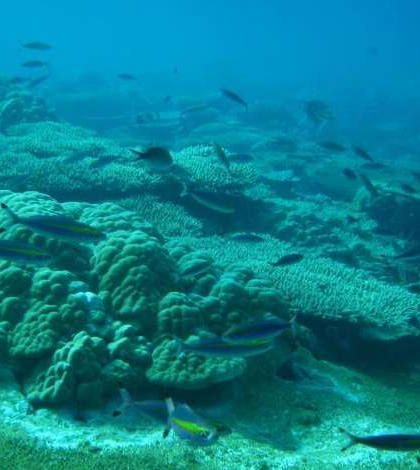
19/03/2018 · Coral bleaching started in the Western Indian Ocean in January and peaked by May , with bleaching in the Seychelles ranging from 69-99% resulting in a subsequent 50% reduction in hard coral cover (SIF 2017).
throughout the Caribbean and Indian Ocean. Bleaching was recorded in Jamaica in 1987, 1988, 1990 (Hughes 1994) and 1995 (Woodley in press), and at Lee Stocking Island in the Bahamas in 1987, 1990, 1993 and 1995 (J. Lang personal communication) while in the Indian Ocean, corals in the Andaman Sea bleached in 1991 and againin1995(Brownetal.1996).Althoughthe1990shave seen recurring bleaching …
Western Indian Ocean Regional Bleaching Warning Network; 6 March 2009 Contact: Majambo Jarumani info@cordioea.org; David Obura dobura@cordioea.org p 1 of 3 CORDIO/IUCN Climate Change and Coral Reef The maximum sea surface temperatures, that cause coral bleaching, occur in January in southern Madagascar/central Mozambique, and progress through to May in the northern IO as the …
Responding to coral bleaching in the Western Indian Ocean in 2016 David Obura JulienWickel, MAREX
The impact of climate change through thermal stress-related coral bleaching on coral reefs of the Western Indian Ocean has been well documented and is caused by rising sea water temperatures associated with background warming trends and extreme climate events.
Changes in Biodiversity and Functioning of Reef Fish
A REEF MANAGER’S GUIDE TO CORAL BLEACHING 100 Natural variations in turbidity may also play an important role in determining bleaching risk. A recent study of the patterns in underwater light levels on a coastal coral reef found that
Coral bleaching was reported in 60 countries and island nations at sites in the Pacific Ocean, Indian Ocean, Red Sea, Persian Gulf, Mediterranean and Caribbean. Indian Ocean corals were particularly severely impacted, with greater than 70 percent mortality reported in the Maldives, Andamans, Lakshadweep Islands, and in Seychelles Marine Park System. Unlike most previous bleaching …
global degradation of coral reef environments, especially in the Indian Ocean [20]. Moreover, the Moreover, the frequency, extent and magnitude of climate-induced coral bleaching …
ReefBase Main Publications Coral Bleaching in the
evaluated large-scale patterns of coral communities in the western Indian Ocean after a major coral bleaching event in 1998. We surveyed 291 coral reef sites in 11 countries and over 30u of latitude between 2004 and 2011 to evaluate variations in
Coral reefs around the world are in deep trouble. Last month, scientists reported that Australia’s Great Barrier Reef corals were experiencing “the worst mass bleaching event in its history”.
The Great Barrier Reef is experiencing the worst mass coral bleaching event in its history. More than 1000 km (approximately half) of the Great Barrier Reef has so far been affected
CORAL REEFS Spatial and temporal patterns of mass bleaching of corals in the Anthropocene Terry P. Hughes,1* Kristen D. Anderson,1 Sean R. Connolly,1,2 Scott F. Heron,3,4
3/01/2008 · Coral bleaching (i.e., the release of coral symbiotic zooxanthellae) has negative impacts on biodiversity and functioning of reef ecosystems and their production of goods and services. This increasing world-wide phenomenon is associated with temperature anomalies, high …
SOCIO-ECONOMIC ASSESSMENT OF THE IMPACTS OF THE 1998 CORAL REEF BLEACHING IN THE INDIAN OCEAN: A SUMMARY Susie Westmacott1, Herman Cesar2 and Lida Pet-Soede3
French Indian Ocean Territories (FIOT) coral reefs A general overview meeting, december 2011 Reunion island . FIOT coral reefs : an heterogeneous situation REUNION ILES EPARSES MAYOTTE . FIOT coral reefs : an heterogeneous situation but a unique richness for France and EU From young fringing reefs to “old” coraline islets, an important diversity of landscapes, habitats & species. A wide
Modelling Ecological Susceptibility of Coral Reefs to Environmental Stress Using Remote Sensing, GIS, and in situ Observations: A case study in the Western Indian Ocean
5/02/2011 · Western Indian Ocean coral reefs experienced widespread coral bleaching during the first global coral bleaching event in 1998, in which 30-50% of corals were estimated to have died. It was also affected by what has been dubbed the “3rd global coral bleaching event” in 2016,
Status of the Coral Reefs at the Cocos (Keeling) Islands

Coral bleaching hits the Maldives in the Indian Ocean
https://youtube.com/watch?v=TxoQoSlFyJ4
Coral Bleaching, Diseases and Mortality in the Western Indian Ocean 159 Despite this spatial and temporal patchiness, the long-term temperature re
New images have been released showing coral bleaching in the Maldives, as the global mass bleaching event strikes the Indian ocean. The extent of the …
Coral bleaching occurs when coral polyps expel algae that live inside their tissues. Normally, coral polyps live in an endosymbiotic relationship with this algae crucial for the health of the coral and the reef. The algae provides up to 90% of the coral’s energy.
Cotton Candy Corals Bleaching in the Indian Ocean (KSLOF
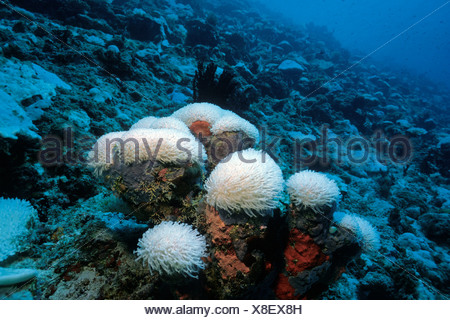
The aftermath of coral bleaching on a Maldivian reef—a
Indian Ocean Coral Bleaching Thermal Stress Outlook for March-June 2010, issued on March 16, 2010 About Coral Reef Watch’s new Coral Bleaching Seasonal Outlook product (Version 2): An improved version (Version 2) of the CRW Coral Bleaching Seasonal Outlook product was released this month along with this bleaching alert
Coral bleaching has reached the Indian Ocean after ravaging reefs in the Pacific, raising the prospect that damage from warming seas and other stressors could soon be seen on a global scale.
Coral reefs also protect coastlines by absorbing constant wave energy from the ocean, thereby protecting people living near the coast from increased storm damage, erosion and flooding. Until the 1980’s, the only coral bleaching event recorded was due to flooding from Hurricane Flora that resulted in a large drop in salinity that bleached and killed many corals in Jamaica (Goreau 1964).
The coral reefs of the Indian Ocean are extremely diverse ecosystems and play a key role in the productivity of the coastal areas. In addition, these reefs are essential for the food
THE ImpACTS Of CORAL BLEACHINg IN ROdRIgUES, wESTERN INdIAN OCEAN BY EMILY R. HaRdMan, natHaLIE S. StaMpfLI,2 LucY Hunt, SYdnEY pERRInE, anna pERRY, and j.S. jovanI RaffIn
Indian Ocean coral bleaching 16 January 2018 – Given the entire WIO is showing abnormally cool conditions, two cyclones have occurred by mid-January and both ENSO and IOD indicators are neutral, we expect little bleaching in 2018 .
CORAL REEF DEGRADATION IN THE INDIAN OCEAN IUCN
reef loss. Future trajectories of warming ocean waters present a bleak picture. Patterns of bleaching, and the responses of corals, are far from homogeneous.
The extent of the 2016 bleaching, which also affected reefs in other parts of the Indian Ocean and Pacific, was so severe that it was subsequently named the ‘Third Global Coral Bleaching Event’.
CASE STUDY – Coral bleaching in the Indian Ocean In 1997-1998 between 50 and 90 percent of corals in shallow waters of the Indian Ocean were bleached and died. This extreme bleaching followed a very strong El Niño event that contributed to the high sea temperatures.
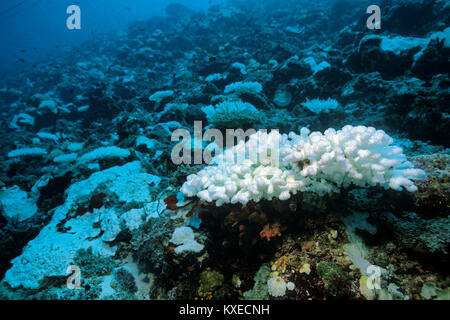
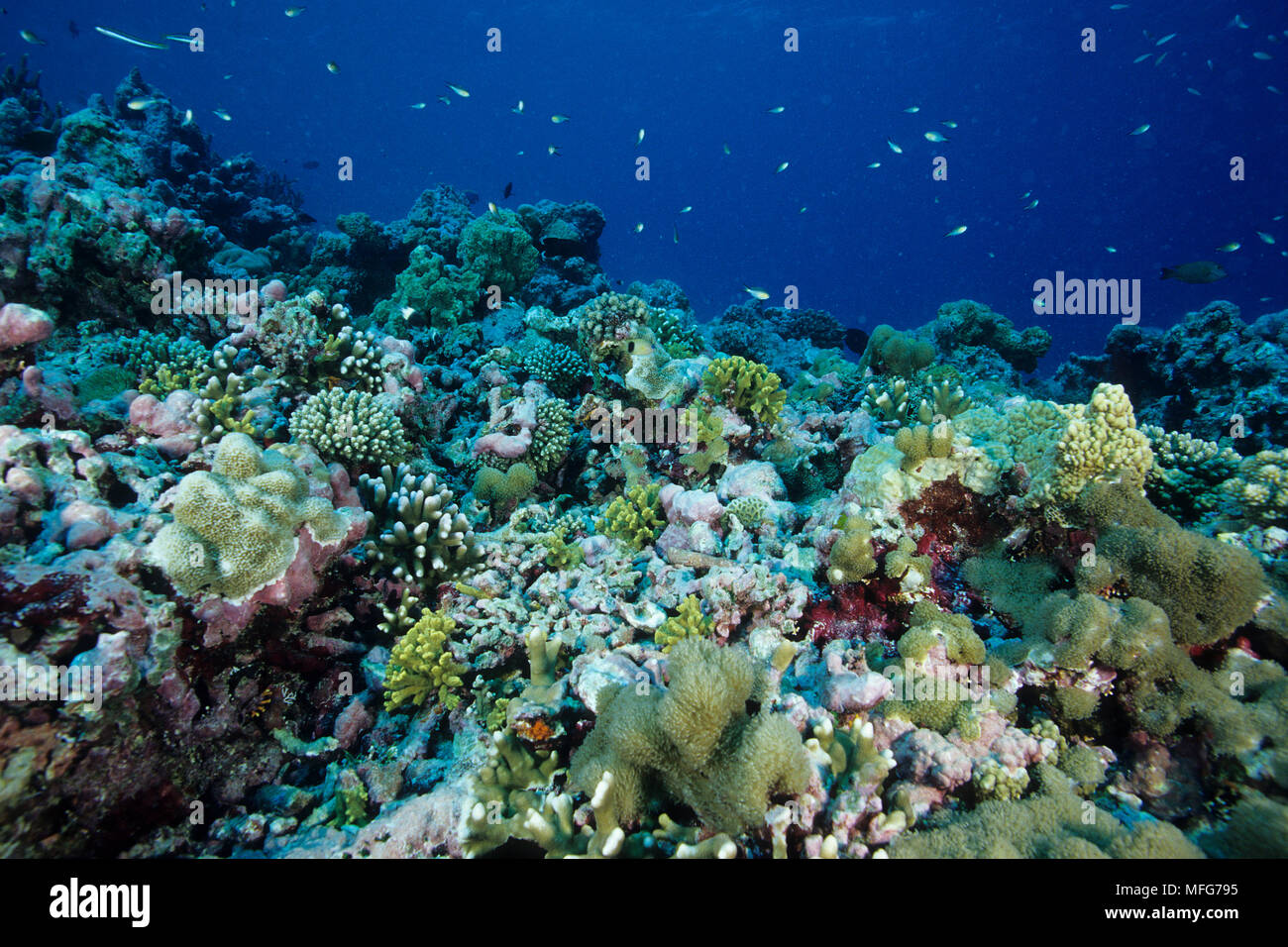
https://youtube.com/watch?v=Mlt3evsewMw
Early Warning Signs of Global Warming Coral Reef Bleaching
WESTERN INDIAN OCEAN Regional coral bleaching alert
PERSPECTIVE Warm-water coral reefs and climate change
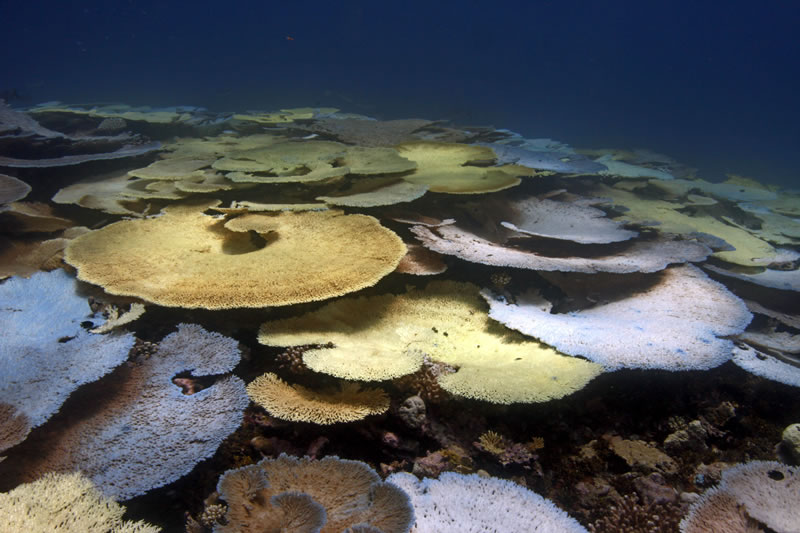
Western Indian Ocean coral communities bleaching
Coral Reefs and the 1997-1998 Mass Bleaching and Mortality
Bleaching interpretation/alert cmsdata.iucn.org
Coral Reef Degradation in the Indian Ocean
19/03/2018 · Coral bleaching started in the Western Indian Ocean in January and peaked by May , with bleaching in the Seychelles ranging from 69-99% resulting in a subsequent 50% reduction in hard coral cover (SIF 2017).
19/05/2015 · Coral bleaching has reached the Indian Ocean after ravaging reefs in the Pacific, raising the prospect that damage from warming seas and other stressors could soon be seen on a global scale.
McClanahan et al.: Coral communities of the western Indian Ocean was calculated as a weighted average, and normalized according to the following formula:
Responding to coral bleaching in the Western Indian Ocean in 2016 David Obura JulienWickel, MAREX
Mention bleaching and some think that it is the death of the Great Barrier Reef’s coral, but the problem is much more widespread. “Bleaching” is when corals lose the highly productive algae (termed zooxanthellae) from their tissues due to stress from high sea temperatures and solar irradiation.
PERSPECTIVE Warm-water coral reefs and climate change
Coral Reefs and the 1997-1998 Mass Bleaching and Mortality
Indian Ocean coral bleaching 16 January 2018 – Given the entire WIO is showing abnormally cool conditions, two cyclones have occurred by mid-January and both ENSO and IOD indicators are neutral, we expect little bleaching in 2018 .
19/03/2018 · Coral bleaching started in the Western Indian Ocean in January and peaked by May , with bleaching in the Seychelles ranging from 69-99% resulting in a subsequent 50% reduction in hard coral cover (SIF 2017).
widespread coral bleaching and mortality in the west-ern Indian Ocean in 1998 (Wilkinson et al. 1999, Goreau et al. 2000), <10% of the corals in Mauritius were bleached, with most of the bleaching occurring in the bleaching-sensitive genus Acropora (Moothien Pil-lay et al. 2002). This may have been due to chance occurrences, such as the presence of clouds or storms (Turner et al. 2000), but
Status of the Coral Reefs at the Cocos (Keeling) Islands (PDF – 2.51 MB) The Cocos (Keeling) Islands are a remote coral reef atoll located in the eastern Indian Ocean . The marine community comprises largely Indo-West Pacific species, with little endemism.
McClanahan et al.: Coral communities of the western Indian Ocean was calculated as a weighted average, and normalized according to the following formula:
Indian Ocean reefs hit by coral bleaching CBS News
‘Heart wrenching’ India’s coral reefs experiencing
– 2 – CORAL REEF DEGRADATION IN THE INDIAN OCEAN Status reports and project presentations 1999 Published by CORDIO SAREC Marine Science Program Department of Zoology
Status of the Coral Reefs at the Cocos (Keeling) Islands (PDF – 2.51 MB) The Cocos (Keeling) Islands are a remote coral reef atoll located in the eastern Indian Ocean . The marine community comprises largely Indo-West Pacific species, with little endemism.
Coral reefs around the world are in deep trouble. Last month, scientists reported that Australia’s Great Barrier Reef corals were experiencing “the worst mass bleaching event in its history”.
Coral Bleaching and Associated Mortality at Mayotte, Western Indian Ocean . By Hampus Eriksson, Julien Wickel and Alban Jamon. Abstract. Abstract—Bleaching and associated coral mortality were assessed on fringing and barrier reefs on the north and east coasts of Mayotte from 1-24 May 2010. Major bleaching was encountered; nearly 80 % of the corals were bleached or dead (covered with …
A mass bleaching event in the Indian Ocean turns corals cotton-candy shades of pink and blue. Written by Elizabeth Rauer. The phrase ‘coral-bleaching’ brings to mind ghostly-white skeletons of coral but what we found when we dived on reefs in the British Indian Ocean Territory (BIOT) was something totally different.
19/01/2016 · David Obura, of CORDIO East Africa, presents an update on the coral bleaching outlook for the Western Indian Ocean for January through May 2016, and …
The coral reefs of the Indian Ocean are extremely diverse ecosystems and play a key role in the productivity of the coastal areas. In addition, these reefs are essential for the food
Bleaching later in 1991 at North Pacific, Indian Ocean, and Atlantic sites followed formation of new hot spots (Fig. 3d). In 1992, in sharp contrast to 1991, very little significant new
Indian Ocean Coral Bleaching Thermal Stress Outlook for March-June 2010, issued on March 16, 2010 About Coral Reef Watch’s new Coral Bleaching Seasonal Outlook product (Version 2): An improved version (Version 2) of the CRW Coral Bleaching Seasonal Outlook product was released this month along with this bleaching alert
Bleaching in 1998: In the southern Indian Ocean islands of Madagascar, Mauritius and Reunion, most corals recovered immediately after the bleaching and mortality was minor. Recovery and new coral growth on Madagascar is encouraging, but in many areas this recovery
Monitoring Coral Bleaching on Christmas Island. Coral bleaching is the number one threat to reefs worldwide. In early 2010, a coral bleaching event occurred on Christmas Island for the first time in …
The Chagos Archipelago is a British overseas territory located in the middle of the Indian Ocean, consisting of 55 islands distributed across six atolls, and covering an area the size of France
Mention bleaching and some think that it is the death of the Great Barrier Reef’s coral, but the problem is much more widespread. “Bleaching” is when corals lose the highly productive algae (termed zooxanthellae) from their tissues due to stress from high sea temperatures and solar irradiation.
Coral Bleaching in the Indian Ocean: Socio-Economic Assessment of Effects, Westmacott S., H.S.J. Cesar, L. Pet-Soede and O. Lindén, 2000, bleaching, economics, The mean temperature on the planet is increasing. The rate of this increase appears to be accelerating and is at present approximately 2 degrees per century. 1998 was the warmest year
French Indian Ocean Territories (FIOT) coral reefs A
Coral bleaching hits the Maldives in the Indian Ocean
SOCIO-ECONOMIC ASSESSMENT OF THE IMPACTS OF THE 1998 CORAL REEF BLEACHING IN THE INDIAN OCEAN: A SUMMARY Susie Westmacott1, Herman Cesar2 and Lida Pet-Soede3
5/02/2011 · Western Indian Ocean coral reefs experienced widespread coral bleaching during the first global coral bleaching event in 1998, in which 30-50% of corals were estimated to have died. It was also affected by what has been dubbed the “3rd global coral bleaching event” in 2016,
– 2 – CORAL REEF DEGRADATION IN THE INDIAN OCEAN Status reports and project presentations 1999 Published by CORDIO SAREC Marine Science Program Department of Zoology
Bleaching in 1998: In the southern Indian Ocean islands of Madagascar, Mauritius and Reunion, most corals recovered immediately after the bleaching and mortality was minor. Recovery and new coral growth on Madagascar is encouraging, but in many areas this recovery
Indian Ocean Coral Bleaching Thermal Stress Outlook for March-June 2010, issued on March 16, 2010 About Coral Reef Watch’s new Coral Bleaching Seasonal Outlook product (Version 2): An improved version (Version 2) of the CRW Coral Bleaching Seasonal Outlook product was released this month along with this bleaching alert
The impact of climate change through thermal stress-related coral bleaching on coral reefs of the Western Indian Ocean has been well documented and is caused by rising sea water temperatures associated with background warming trends and extreme climate events.
Global coral bleaching response and resilience testing programme, September 7, 2007 p 2 of 6 IUCN working group on Climate Change and Coral Reefs
That April, Dempsey and other researchers reported extensive bleaching in the British Indian Ocean Territory, a speck of isles in the Indian Ocean halfway between Africa and Indonesia. “More
Coral bleaching has reached the Indian Ocean after ravaging reefs in the Pacific, raising the prospect that damage from warming seas and other stressors could soon be seen on a global scale.
Scheer G (1971) Coral reefs and coral genera in the Red Sea and Indian Ocean. Symp Zool Soc Lond 28:329–367 Google Scholar Scheer G Investigation of coral reefs at Rasdu Atoll in the Maldives with the quadrat method according to phytosociology.
throughout the Caribbean and Indian Ocean. Bleaching was recorded in Jamaica in 1987, 1988, 1990 (Hughes 1994) and 1995 (Woodley in press), and at Lee Stocking Island in the Bahamas in 1987, 1990, 1993 and 1995 (J. Lang personal communication) while in the Indian Ocean, corals in the Andaman Sea bleached in 1991 and againin1995(Brownetal.1996).Althoughthe1990shave seen recurring bleaching …
A mass bleaching event in the Indian Ocean turns corals cotton-candy shades of pink and blue. Written by Elizabeth Rauer. The phrase ‘coral-bleaching’ brings to mind ghostly-white skeletons of coral but what we found when we dived on reefs in the British Indian Ocean Territory (BIOT) was something totally different.
Status of the Coral Reefs at the Cocos (Keeling) Islands (PDF – 2.51 MB) The Cocos (Keeling) Islands are a remote coral reef atoll located in the eastern Indian Ocean . The marine community comprises largely Indo-West Pacific species, with little endemism.
19/03/2018 · Coral bleaching started in the Western Indian Ocean in January and peaked by May , with bleaching in the Seychelles ranging from 69-99% resulting in a subsequent 50% reduction in hard coral cover (SIF 2017).
The impact of climate change through thermal stress-related coral bleaching on coral reefs of the Western Indian Ocean has been well documented and is caused by rising sea water temperatures associated with background warming trends and extreme climate
